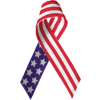For Thursday, October 4 Read, in Davidson, Chapter 3 "Declaring Independence," pp. 48 - 71 Download and bring with to class: "History in the Raw", published by the National Archives and Records Administration at http://www.nara.gov/education/teaching/raw.html "HOW TO READ A PRIMARY SOURCE" which you will find at http://www.bowdoin.edu/~prael/writing_guides/primary.htm The focus for this class will be on getting the most out of a primary source. I would start with the two downloaded articles first. The Archives publication focuses on the "why" of using primary source materials, and while directed primarily at teachers is useful for students as well. The other focuses on "how" to approach primary sources. You will want to understand the acronym, MAPER. Once you have these under your belt you'll be ready to proceed to Davidson's analysis of the Declaration of Independence. Be aware of the different ways he approaches the declaration, why he considers all drafts of the declaration, and how he uses the techniques represented by MAPER. Do you find examples of all of them? What interpretive information about the Declaration does Davidson's technique suggest to you? |



History 203 Dimensions of History Roger Williams University Fall, Semester, 2001 |
Michael R. H. Swanson, Ph. D. Office: Feinstein 111 Hours: M, T, Th, F 9:00-10:00 Phone 401 254 3230 |


After the Fact: The Art of Historical Detection James Davidson and Mark Lytle New York: McGraw-Hill, 2000 |
Assignments for the week of October 2, 2001 |

For Tuesday, October 2 Read, in Davidson, Chapter 2: The Visible and Invisible Worlds of Salem, pp. 23-47 If understanding the situation in Jamestown is complicated by the lack of reliable first hand information, perhaps the opposite problem exists in considering witchcraft in Salem. In Jamestown, the subject is vast and the information slim, in Salem, the area is small (a single village) and the record vast. We have a fairly thorough account of what happened, and a many competing explanations of why it happened. POV is plural not singular, and when historians rely on insights from contemporary scholarly disciplines they have many from which to choose. As you read this essay, be aware of how many different disciplines are used, why we seek to use them in our day and age (the Puritans "knew" what was happening, didn't they?). Note, too, that the end result is a reaffirmation of the concept of multiple causes... something which Schlabach emphasized in our prior readings. |
For Thursday, October 4 Read, in Davidson, Chapter 3 "Declaring Independence," pp. 48 - 71 Download and bring with to class: "History in the Raw", published by the National Archives and Records Administration at http://www.nara.gov/education/teaching/raw.html "HOW TO READ A PRIMARY SOURCE" which you will find at http://www.bowdoin.edu/~prael/writing_guides/primary.htm The focus for this class will be on getting the most out of a primary source. I would start with the two downloaded articles first. The Archives publication focuses on the "why" of using primary source materials, and while directed primarily at teachers is useful for students as well. The other focuses on "how" to approach primary sources. You will want to understand the acronym, MAPER. Once you have these under your belt you'll be ready to proceed to Davidson's analysis of the Declaration of Independence. Be aware of the different ways he approaches the declaration, why he considers all drafts of the declaration, and how he uses the techniques represented by MAPER. Do you find examples of all of them? What interpretive information about the Declaration does Davidson's technique suggest to you? |
A Little Contest! As you continue doing your web research as you come across useful and interesting sites e-mail me the URLs for them. There are two ways to do this: 1. Cut and paste the URL into an e-mail and send it to me, or 2., if your browser is integrated with your e-mail program right click on the page, and when the drop down menu appears, click on "send page" and then address the resulting e-mail to me. I will link the site to our class website and acknowledge the first person to send it to me. The person with the most firsts wins. Contest ends at the end of the semester, though there may be acknowledgments earlier. There will be a prize. |